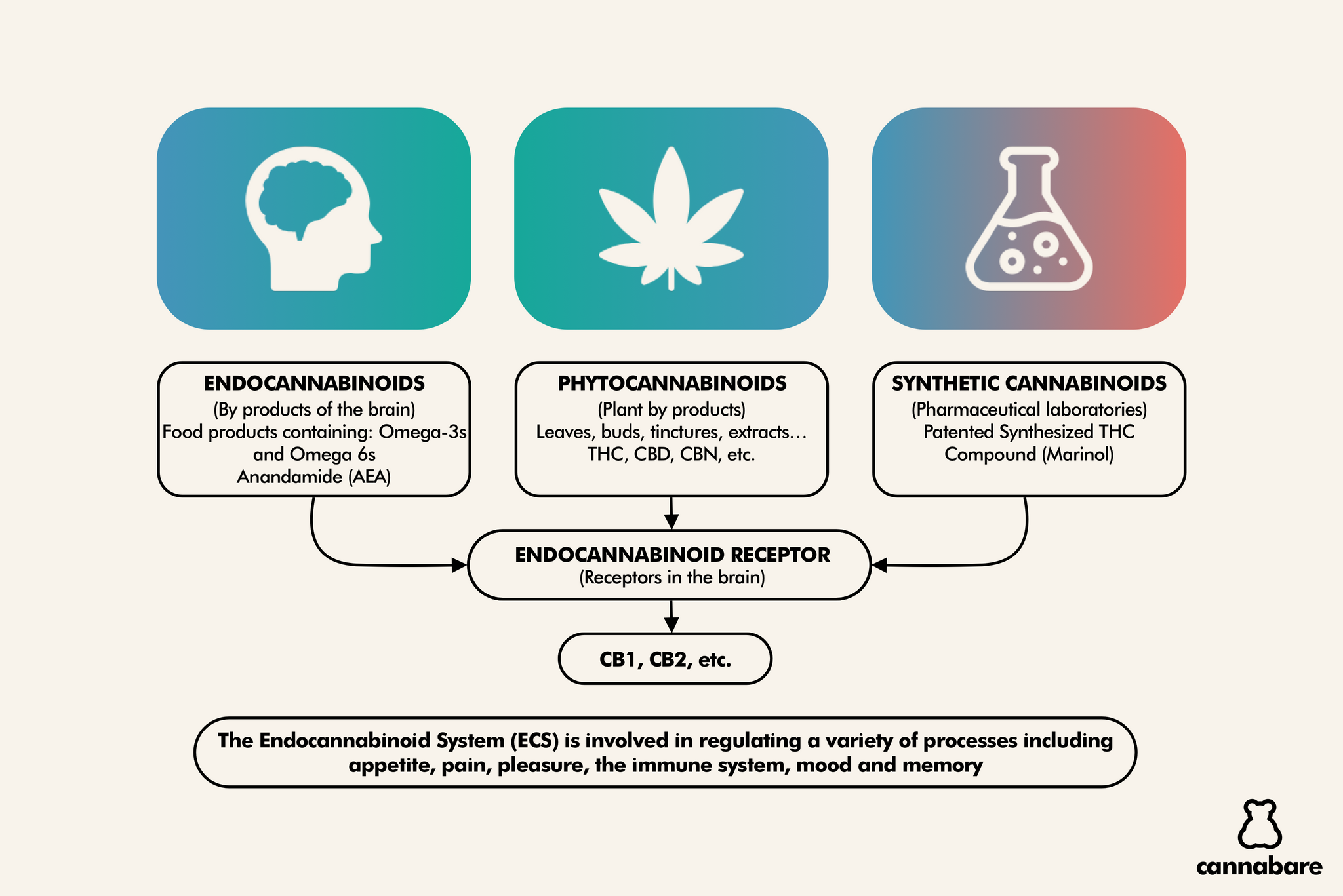Biology and Chemistry of CBD
PHYTOCANNABINOIDS
While there has been controversy about using cannabis to treat health conditions, there is growing scientific acceptance that the plant has significant medicinal value. Phytocannabinoids are the name given to cannabinoids of a plant-based nature. These substances are unique to cannabis and occur in all varieties. Although THC is the well-known phytocannabinoid that is responsible for most of the psychotropic effect of cannabis, other phytocannabinoids exert their own profound effects.

Phytocannabinoids are different from endocannabinoids, but they interact with that internal body system and also upon related non-cannabinoid systems in a similar manner. Unlike endocannabinoids, the phytocannabinoid system works all over the body all of the time it is present—so why are phytocannabinoids never lethal? Some feel it is because there are no endocannabinoid receptors in the brainstem, but this doesn’t explain why synthetic drugs that block or enhance the endocannabinoid system have killed and caused severe psychiatric, cardiac, and brain damage. More likely, the complexity of this system matches up well with the complexity of our own system, and co-evolution of both systems has positively affected the genomes of each.
Cannabidiol (CBD) was among the first of the phytocannabinoids discovered and was incorrectly thought to be a non-active cannabinoid because researchers were looking for the psychoactive aspect of the plant. Not only did CBD lack this activity, but it also turned out to not be directly active on CB1 or CB2 receptors when they were discovered over sixty years later. Instead, CBD works indirectly, stimulating the body’s endogenous cannabinoid system by blocking the FAAH enzyme responsible for breaking down anandamide. When more anandamide is present, there is greater CB1 activation and a more vital endocannabinoid system. CBD also binds to various other receptors in the brain, including serotonin 5HT1A (contributing to its antidepressant effect), TRPV1 (contributing to its anti-psychoactive and osteoprotective effects), among others.
Phytocannabinoids play a complex, multilayered role in the body’s endocannabinoid system. Plant cultivators have been developing high-THC strains of the plant, but they have also been developing low-THC and high-CBD strains. THC does have therapeutic benefits. Too much, however, can cause anxiety, paranoia, and increased inflammation. The focus of medical treatment needs to be that of achieving the right dose of a balanced spectrum of cannabinoids tailored to the particular condition.
There are 421 identified chemical compounds in cannabis, over 100 of which are phytocannabinoids. Most of the testing of this system has been with refined THC and more recently refined CBD. The non-cannabinoids in the plant include many compounds known as terpenoids (terpenes), phenols, and flavonoids, found throughout a broad range of plant species. While phytocannabinoids are unique to cannabis, the interaction of the phytocannabinoids with these non-cannabinoid substances common throughout the plant world may augment the broad-based effects of cannabis on the body.




